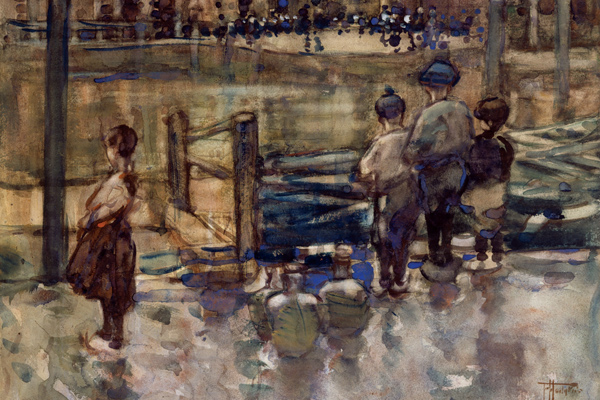Review: Frances Hodgkins in 1913
Frances Hodgkins
Dunedin-born artist Frances Hodgkins (28 April 1869 – 13 May 1947) was a painter primarily of landscapes and still-lives. She is considered one of New Zealand's most prestigious and influential painters, although it is the work from her life in Europe that is most reputable.
Between 1901, when Hodgkins first went to Europe, and 1912, when she returned to New Zealand on 25 December, she travelled widely, making visits, sometimes very brief, sometimes extending over several months, to Scotland, Belgium, the Netherlands, Italy, Morocco, and England and she lived in France for almost five and a half years. She had her first solo exhibition in London, won two art competitions, and her paintings were accepted by prestigious institutions in Paris such as The Salon and the Societe Internationale d'Aquarellistes.
Frances Hodgkins visited New Zealand for the last time in 1913, and the current exhibition at the DPAG is comprised of pieces that were purchased for public collections during that time. Referred to as a “photo essay” by curator Dr Roger Collins, the nostalgic collection allows us to enter into some of the moments, and the places she had them, during this time. Frances Hodgkins left New Zealand in October 1913 and this trip was the last time she would return to her home country before she would resume her journey towards international recognition.
The works in this collection seem to display the unfamiliar places and cultures from her experiences, from the “dramatic colours of Morocco, [to] the fishing boats and market scenes of Caudebec and Concarneau.” They also demonstrate the place of people in her work, advancing from an exploitative fascination with the externals of dress and place to interaction with the inner personalities of those around her; such themes are repeatedly reflected on in the works acquired for Dunedin’s art gallery in 1913.
The impressionistic painting of Hodgkins’ “Summer,” c.1912, captures the spirit of Europe in the summer season where people are playful, colours are fresh and the feeling is warm. In it, a man and woman mind a child under a tree, dressed in bourgeois (fashionable) clothing. The brushstrokes are gentle and the luminous colours dissolve into each other. Indeed, it is so picturesque it could almost pass as a scene in one of Beatrix Potter’s garden tales. The painting embodies the essence of its subject as it does not necessarily reflect nature but gives a sense of the natural forms appearing within the abstraction, suggesting Hodgkin’s interest in suspending the interactions of the different cultures she experienced in different countries throughout her life.
This aesthetic extends to the other pieces in the collection, which share a similarly post -impressionistic style, with a specific attention to light and focus. “Dordrecht,” c.1908, is a watercolour piece on paper, which shows a scene from Dordrecht in the Netherlands, where she lived during that year, and also took a summer sketching class in 1907. The scene is typically picturesque and captures the landscape of the Netherlands at dusk through Hodgkins’ sensuous use of colour and free handling of the brush. Hodgkins keeps the colours within a purposefully minimal range, but the complementary contrast between the colours blue, red and orange is very carefully handled and gives the warmth and chill that comes with dusk.
A reflective and nostalgic, but still fresh and joyful, exhibition, this private collection is not to be missed.
Additionally, it should be noted that, as a tribute to Frances Hodgkins, the University of Otago Council established the Frances Hodgkins Fellowship in 1962 to aid and encourage painters, sculptors and multi-media artists, while at the same time associating them with the life of the University and fostering an interest in the arts within the University. The annual, 12-month fellowship provides a studio/office space and not less than the minimum salary of a full-time university lecturer. It is open to artists who are normally resident in New Zealand and who, in the opinion of the Selection Committee, have executed work that demonstrates their talent and would benefit from holding the Fellowship. In 2015 the Fellowship has been awarded to John Ward Knox.



